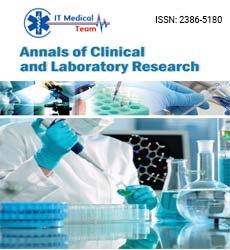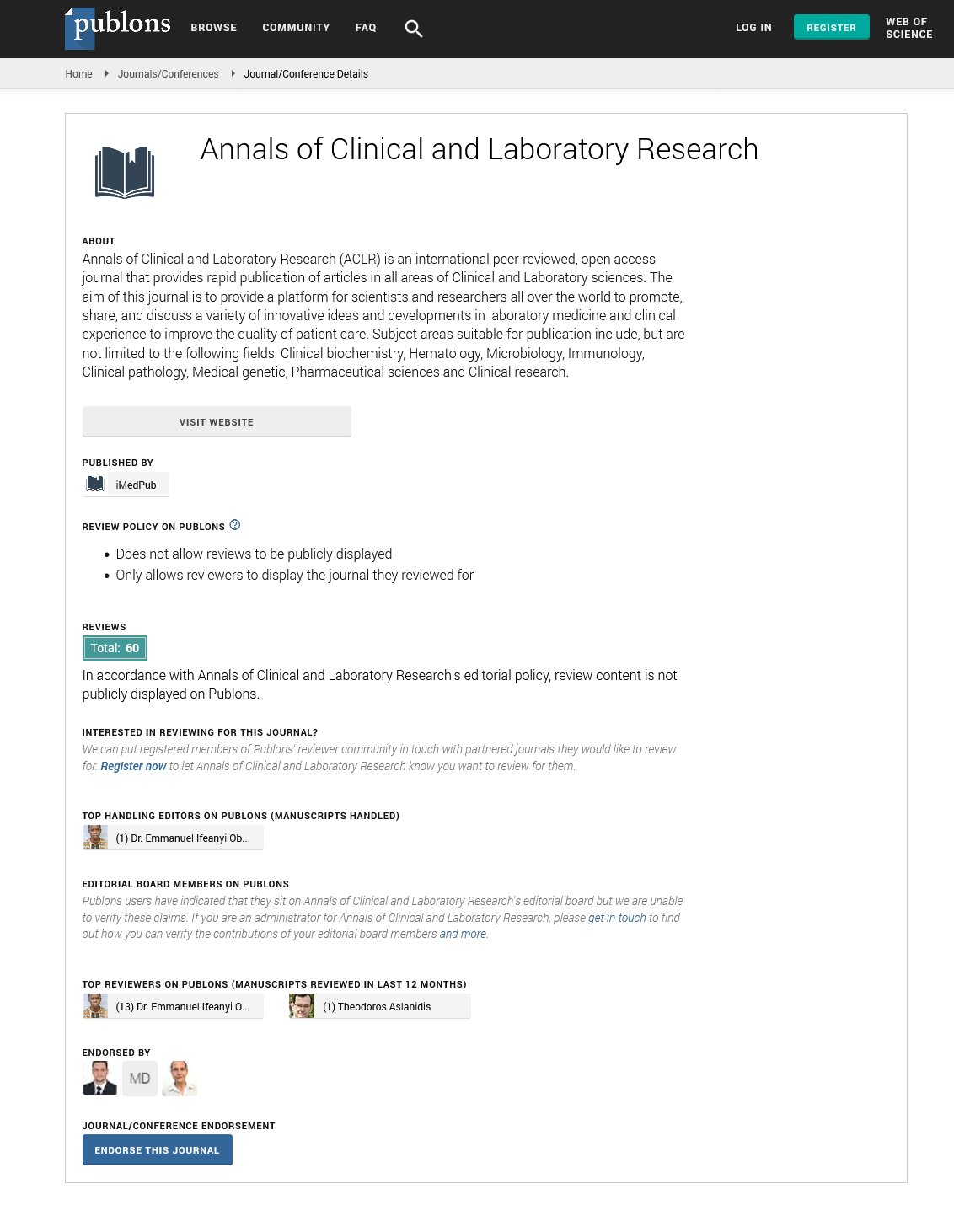Perspective - (2025) Volume 13, Issue 1
Innovative Saliva Test Strips for Precise Ethanol Level Determination: Development and Validation
Hanna Beier*
Department of Biotechnology, University of Turku, Turku, Finland
*Correspondence:
Hanna Beier, Department of Biotechnology, University of Turku, Turku,
Finland,
Email:
Received: 14-Feb-2024, Manuscript No. IPACLR-24-14559;
Editor assigned: 16-Feb-2024, Pre QC No. IPACLR-24-14559 (PQ);
Reviewed: 01-Mar-2024, QC No. IPACLR-24-14559;
Revised: 14-Mar-2025, Manuscript No. IPACLR-24-14559 (R);
Published:
21-Mar-2025
Introduction
The accurate determination of ethanol levels is crucial in various fields such as forensic science, healthcare and law enforcement. Conventional methods often involve blood tests or breathalyzers, which can be invasive, time-consuming or require specialized equipment. Saliva based testing offers a non-invasive and convenient alternative. In this study, we present the development and validation of saliva test strips for the accurate measurement of ethanol levels. These test strips utilize specific chemical reactions to detect ethanol in saliva samples with high sensitivity and accuracy. Our results demonstrate the feasibility and reliability of these test strips, suggesting their potential utility in various applications where rapid and non-invasive ethanol level measurement is required.
Description
Ethanol, the primary psychoactive component in alcoholic beverages, has significant implications for public health and safety. Accurate measurement of ethanol levels is essential in forensic investigations, monitoring individuals under legal constraints (e.g., probation, parole), assessing impairment in drivers and managing alcohol-related disorders in healthcare settings. Traditional methods for measuring ethanol levels often involve blood tests or breathalyzers, which have limitations such as invasiveness, time-consuming sample processing and requirements for specialized equipment and trained personnel. Saliva based testing presents an attractive alternative due to its non-invasiveness, ease of collection and potential for rapid analysis. In this study, we aimed to develop saliva test strips capable of accurately determining ethanol levels, offering a convenient and practical solution for various applications.
The development of saliva test strips involved several key steps. Firstly, we selected appropriate chemical reagents that undergo specific reactions with ethanol to produce detectable changes in color or fluorescence. Next, we optimized the composition and formulation of the test strips to ensure sensitivity, specificity and stability under various storage conditions. We conducted experiments to evaluate the performance characteristics of the test strips, including sensitivity, selectivity, detection range and response time. Validation studies were performed using saliva samples spiked with known concentrations of ethanol to assess the accuracy and precision of the test strips compared to reference methods such as gas chromatography.
The developed saliva test strips exhibited high sensitivity to ethanol, with a detection limit within the clinically relevant range. The test strips showed excellent selectivity for ethanol, with minimal interference from other common constituents of saliva. The response of the test strips was rapid, allowing for near real-time detection of ethanol levels. Validation studies demonstrated a strong correlation between the ethanol concentrations measured by the test strips and reference methods, indicating their accuracy and reliability for quantitative analysis of ethanol in saliva samples.
The development of saliva test strips for ethanol detection represents a significant advancement in non-invasive alcohol testing technology. These test strips offer several advantages over traditional methods, including ease of use, rapid results and portability. Their potential applications range from roadside testing for impaired driving to monitoring individuals in rehabilitation programs. Further research could focus on enhancing the sensitivity and specificity of the test strips, expanding their detection range and validating their performance in diverse populations and settings.
Conclusion
In conclusion, we have successfully developed saliva test strips capable of accurately determining ethanol levels with high sensitivity and specificity. These test strips offer a convenient and non-invasive solution for ethanol detection, with potential applications in various fields including forensic science, healthcare and law enforcement. Further refinement and validation of these test strips could lead to their widespread adoption as a versatile tool for alcohol testing in diverse settings.
Citation: Beier H (2025) Innovative Saliva Test Strips for Precise Ethanol Level Determination: Development and Validation. Ann Clin Lab Res Vol:13
No:1






